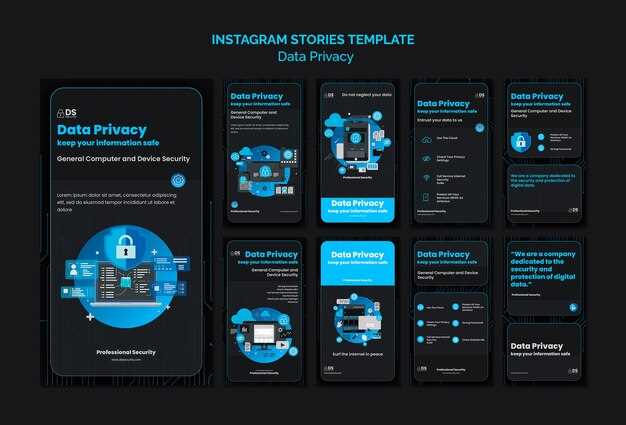In the competitive world of software, the journey from inception to widespread adoption is often fraught with challenges. Developers constantly seek strategies to enhance the performance and outreach of their projects. Success requires more than mere technical prowess; it demands a strategic approach and keen understanding of the market complexities. One critical question remains: how do you turn a burgeoning idea into a user-favorite?
Step onto this insightful path with industry veterans who’ve mastered the art. We’ve gathered valuable insights and strategies, all distilled from years of hard-earned experience. Our goal is to equip you with actionable advice to elevate the reach and performance of your software. By diving deep into this knowledge pool, you can bypass many common pitfalls and accelerate progress.
Imagine navigating through proven methodologies that ensure efficiency and user satisfaction. These seasoned professionals have faced the highs and lows and now offer their expertise. To thrive in this dynamic space, it’s crucial to integrate their wisdom with your innovative spirit. Together, let’s embark on a journey to transform great ideas into outstanding solutions, celebrated by users worldwide.
Steps to Scaling Your Mobile Application
Growing a software solution to handle increased user demand can be challenging. It requires strategic planning and careful execution. First, it’s essential to ensure that a solid foundation is in place. Without this, expanding capabilities would be difficult. Let’s break down specific actions that can help in this process.
Begin with analyzing current performance metrics. Look at user engagement, response times, and database queries. Understanding these metrics provides insights into areas needing improvement. Next, consider the architecture. Is it scalable and flexible? A monolithic structure can be a bottleneck. Opt for a more modular approach, perhaps microservices. This separation allows for independent updates and scaling of each service.
Invest in quality assurance processes. Automated testing can reveal performance issues before deployment. Regular code reviews can also catch potential problems early on. Security shouldn’t be an afterthought. Ensuring that data protection measures comply with regulations is critical. Scalability isn’t just about handling more users. It also means maintaining a secure environment.
Database optimization is another crucial step. Indexing, query optimization, and choosing the right database types can enhance performance. NoSQL databases like Cassandra or MongoDB are often preferable for larger datasets. Efficient caching mechanisms can also reduce load times. Utilize Redis or Memcached where applicable.
| Aspect | Description |
|---|---|
| Performance Metrics | Analyze user engagement, response times, and database queries. |
| Architecture | Shift to modular or microservices-based architecture for flexibility. |
| Quality Assurance | Implement automated testing and regular code reviews. |
| Security | Ensure data protection measures and regulatory compliance. |
| Database Optimization | Use indexing, query optimization, and appropriate database types. |
| Caching Mechanisms | Employ Redis or Memcached to reduce load times. |
Monitoring is pivotal. Real-time analytics provide continuous insights. Tools like New Relic, Datadog, and Grafana can help keep track of system health. Proactive issue resolution minimizes downtime. Regularly revisiting the infrastructure is also essential. What works today may not suffice tomorrow. Constant evaluation ensures the architecture remains robust.
Push updates iteratively. Rolling out small, frequent updates allows for easier debugging. Large updates can overwhelm both the system and the users. Gradual changes offer a smoother transition. Analytics should guide these updates. User feedback is invaluable. Addressing pain points promptly enhances overall satisfaction. Remember, adaptability is key in this dynamic environment.
Understanding Your User Base
Knowing who interacts with your digital product is crucial. This goes beyond simple analytics. Dive deep into demographics, preferences, and behaviors. Users aren’t just numbers. Each one has unique needs.
Engagement metrics provide insight. But raw data can deceive. Look beyond surface-level stats. Investigate why users drop off. Identify patterns. This will reveal hidden opportunities. User feedback is gold. Take it seriously because it gives direct insight.
Diverse user personas matter. Tailor experiences accordingly. Not all users are the same. Segmenting helps in catering distinct needs. Understand what drives satisfaction. High engagement indicates value.
Communities offer immense value. Forge connections with users. Build loyalty. Listen actively to their concerns. Address issues promptly. Feedback loops create trust. Engaged users convert better. They also advocate for your product.
Analyzing behaviors is continuous. Trends evolve over time. Stay updated. Be proactive. Anticipate changes in user preferences. React swiftly to shifts. Regularly revisit your understanding. It ensures relevancy and growth.
Analyzing User Behavior

Understanding user actions is crucial for improving any digital product. It helps in making informed decisions. You can adapt features based on real data. Users interact with every element differently. Knowing these patterns is key.
There are multiple techniques for this. Some are more detailed. Others provide a broader picture. Combining different approaches is often beneficial. Let’s explore some effective methods:
- Analytics Tools:Platforms like Google Analytics or Mixpanel offer extensive data. These tools track page views, button clicks, and user paths. You gain insights into what works and what doesn’t. They also help in identifying drop-off points in the user journey.
- Heatmaps:Services such as Hotjar or Crazy Egg visualize user interaction. They show where users click, scroll, and spend time. Heatmaps offer a visual representation of user focus areas, indicating which parts of your interface grab attention and which are ignored.
- User Surveys:Direct feedback is invaluable. Ask users about their experience. Short and targeted questions work best. Surveys can uncover issues not visible through analytics. User opinions often highlight pain points or desired features.
- A/B Testing:Compare different versions of a feature. Split your audience to determine user preference. This method relies on real user interaction rather than assumptions, making it one of the most reliable ways to validate changes.
- Session Recordings:Watch real user sessions. Tools like FullStory record user interactions. This method provides a firsthand look at navigation issues or confusing elements. Observing real behavior can uncover subtle issues that numbers alone might miss.
Combining these methods gives a comprehensive view. You capture both quantitative and qualitative data. This mixture allows for a deeper understanding of user engagement.
Segmenting Your Audience

Understanding your user base is crucial. Each person using the application is unique. Identifying different groups within the user pool can help tailor experiences. Grouping users by specific characteristics allows more personalized interactions. It improves engagement and retention.
Demographic Segmentationfocuses on user attributes like age, gender, and income. These characteristics determine needs and preferences. Age groups have different expectations. Gender can influence content relevance. Income affects purchasing behavior. Combining these factors offers a clearer picture.
Behavioral Segmentationemphasizes interactions with the app. Track user activities and engagement levels. Identify patterns such as frequency of use and feature preferences. What features do they use most? How often do they return? Such insights guide targeted improvements and marketing efforts.
Geographic Segmentationconsiders users from different regions. Each location has its own trends and needs. Tailor content and services accordingly. A user in New York might have different requirements compared to someone in Tokyo. Understanding geographic preferences enhances relevance.
Psychographic Segmentationdives into personalities, values, and lifestyles. This is more nuanced but highly effective. Preferences and motivations drive their app choices. Crafting messages and functionalities that resonate with these aspects fosters deeper connections. It’s about aligning with users’ inner values and desires.
Combining these segmentation strategies is beneficial. It provides a multi-faceted understanding of the user base. This approach informs better decision-making. Personalization becomes more effective. Engagement increases because users feel understood. They stick around because the app speaks directly to them.
Optimizing App Performance
Ensuring top-notch performance is crucial for keeping users engaged. Fast and responsive applications make a significant difference in user experience. Efficient backend processes help reduce loading times. Minimizing unnecessary complexity is key. Thoughtful resource management prevents sluggish performance.
Considerevery element of code. Redundant logic and bloated functions slow everything down. Regularly review and refactor code to maintain efficiency. Utilize asynchronous processing where possible. Efficient algorithms reduce processing load significantly on the server.
Optimizegraphical assets. Compress images without compromising quality. Use vector graphics when appropriate. Properly scale images for different screen sizes. Efficiently use animations and transitions. They should enhance, not hamper, the experience.
Database queries can be a major bottleneck. Indexing key fields speeds up searches. Retrieving only necessary data reduces load times. Efficient database design and regular maintenance are critical. Data caching greatly improves performance for repeat access. Consider using Content Delivery Networks (CDNs) to distribute data efficiently across geographic locations.
A smart use of API calls is essential. Batch multiple actions into single server requests. Avoid unnecessary network calls. Efficient data transfer protocols like JSON reduce payload sizes. Monitor and limit API request frequency to avoid overload.
Testing is vital. Regularly test on various devices and network conditions. Different hardware specifications bring different challenges. Simulate low bandwidth to see impacts on performance. Load testing verifies if the application can handle high traffic. Performance monitoring tools help identify issues early. Continuously improve based on real-time data and user feedback.
Ultimately, creating a seamless and responsive experience delights users. Focused optimization strategies ensure that applications perform well. Prioritize both frontend and backend improvements. Keep refining the process. The result will be a high-performing application that users love.
Improving Response Times

Fast response times are critical for engaging users. When waiting is minimized, satisfaction increases. Snappy performance can make or break user retention. Consistency is key. Optimized applications keep users happy. A detailed approach ensures quick interactions.
There are numerous methods to enhance speed. Start by scrutinizing backend performance. Often, the issue lies in slow server responses. Database queries can also cause delays. Implement caching strategies. Caching can serve frequent data requests quickly.
- Audit backend performance
- Optimize database queries
- Use caching strategies
Next, consider network latency. Minimizing data travel time is essential. Geographically dispersed servers help. Distribute content delivery to reduce load times. Every millisecond counts.
- Reduce network latency
- Use geographically dispersed servers
- Implement content delivery networks (CDNs)
Front-end performance is equally crucial. Optimize images and other assets. Compress files to decrease load times. Limit the number of server requests. Usage of fewer requests means faster loading.
- Optimize images and other assets
- Compress files for faster load times
- Limit server requests
Monitoring tools are invaluable. Regular checks uncover performance bottlenecks. Adjust as necessary based on findings. Analyze user feedback. Their experiences can highlight unnoticed issues.
- Use monitoring tools
- Perform regular performance checks
- Analyze user feedback
Fast applications delight users. Ensure efficiency at every layer. Prioritize speed to keep engagement high.
Load Testing
Robustness and reliability under pressure are paramount in any application. It’s essential to understand how an application behaves when many users log in simultaneously. This isn’t just a technicality; it’s about user experience. Several approaches can be adopted for efficiency verification. Each serves a unique purpose. Understanding these methods ensures smooth performance under all conditions.
- Simulate Real-World Usage:Mimic different user scenarios. Vary the user actions. Rotate the testing patterns to cover every possible interaction. By doing this, one can foresee potential issues and seamlessly address them before they impact real users.
- Identify Bottlenecks:Locate areas that slow down the performance. These bottlenecks can be in various components, including backend services and databases. Once identified, optimize them for faster and more efficient processing.
- Use Automated Tools:Leverage software tools designed for performance evaluation. Such tools can automatically replicate user activity. They provide detailed insights into system behavior under stress. JMeter and LoadRunner are popular choices. They offer extensive options for configuring and running load tests.
- Assessment and Monitoring:Continuously monitor system metrics. This includes CPU usage, memory consumption, and network latency. Real-time monitoring helps in quickly identifying anomalies. Consistent monitoring is key to maintaining optimal performance.
- Optimize Based on Findings:Post-testing, analyze the collected data. Determine areas needing improvement. Implement fixes. Rerun load tests to verify the effectiveness of changes. This cycle of testing and optimization ensures a robust application.
A controlled environment for stress evaluations is not just beneficial; it’s vital. It helps in understanding real-world limitations. More importantly, it provides a chance to address issues before they affect actual users, ensuring smoother user experiences. Ensure to allocate resources wisely for these evaluations. Neglecting this step can lead to disastrous consequences. Periodic reassessment ensures consistency in maintaining high performance. This way, users have a seamless experience every time they engage with the application.
Ensuring High Availability
High availability is crucial in maintaining a consistent user experience. It involves strategies and practices that keep services running with minimal downtime. Ensuring consistent performance and reliability is paramount. This includes both proactive measures and reactive strategies. A carefully crafted plan addresses potential hiccups before they escalate.
| Strategy | Description |
|---|---|
| Load Balancing | Distributing network traffic across multiple servers to ensure no single server becomes a bottleneck. This helps in maintaining optimal performance during peak loads. |
| Redundancy | Implementing backup systems to take over in case of failures. These backups ensure that if one system goes down, others can continue to provide service seamlessly. |
| Automatic Failover | Setting up automatic switching to a standby server if the primary one fails. This reduces downtime by allowing systems to recover quickly and without manual intervention. |
| Continuous Monitoring | Regularly keeping an eye on system performance and health. This enables quick identification and resolution of issues before they impact users. |
| Disaster Recovery | Creating a comprehensive plan that outlines steps to restore services after a catastrophic failure. It includes data backups, recovery procedures, and detailed response strategies. |
These methods combined create a robust framework for uninterrupted service. Each strategy offers a layer of protection. Together, they form a multi-faceted approach to availability. Users expect services to be swift and reliable. Meeting these expectations fosters trust and loyalty. An unbroken service enhances user satisfaction and retains engagement. It’s about being prepared and proactive. Integrating these practices ensures a resilient and reliable service.
Video:
How to scale a web application to a million users in 10 steps
How to scale a web application to a million users in 10 steps by Software Nerd 31,894 views 3 years ago 57 seconds
Questions and answers:
What are the initial steps I should consider when planning to scale my mobile app?
When planning to scale your mobile app, the initial steps include assessing your current infrastructure to identify potential bottlenecks, analyzing user metrics to understand usage patterns, and outlining a clear roadmap for growth. It’s crucial to optimize your backend to handle increased loads, invest in a scalable database solution, and ensure your code is clean and modular. Additionally, consider leveraging cloud services for flexibility and conducting performance testing to anticipate and mitigate potential issues.
How can I ensure my app maintains high performance with increased traffic?
To maintain high performance during traffic surges, implement load balancing to distribute traffic evenly across servers. Cache data strategically to reduce database load and employ content delivery networks (CDNs) to minimize latency. Regularly monitor performance metrics and perform stress testing to identify weak points early. Furthermore, optimize your codebase for efficiency and consider using microservices architecture to scale individual components independently.
What are the most common challenges faced when scaling a mobile app?
Some common challenges when scaling a mobile app include handling increased server loads, managing database scalability, ensuring data consistency, and maintaining app performance under high traffic. Additionally, security risks grow as the user base expands, making it necessary to reinforce security measures. User experience issues may also emerge if the app isn’t optimized for diverse devices and operating systems. Effective scaling requires a robust strategy centered on both technical and user-centric aspects to address these challenges comprehensively.
When should I consider transitioning from a monolithic architecture to microservices for my app?
The transition from a monolithic architecture to microservices usually becomes relevant when your app’s complexity and user base grow to the point where a single, unified codebase becomes a bottleneck. This is typically indicated by slow development cycles, difficulty in scaling specific components, and frequent deployment issues. Moving to microservices can enhance flexibility, allow independent scaling of different app parts, and streamline updates and maintenance. However, it’s a significant shift that requires thorough planning, skilled developers, and appropriate tooling to manage communication and data consistency across services.



